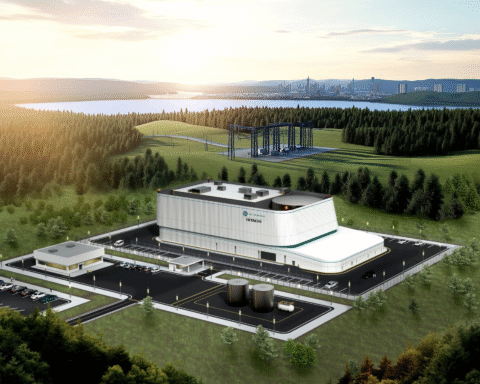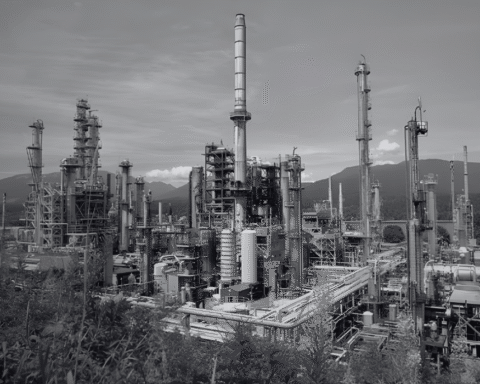The federal government is planning to get back into the oil pipeline business, although executing on that goal will be extremely tough given commercial, political and constitutional realities.
In the spring election campaign, Prime Minister Mark Carney vowed to pursue pipeline construction across the country, including an oil pipeline that would displace foreign imports of crude into Eastern and Central Canada. Both he and Natural Resources Minister Tim Hodgson have since reiterated that commitment.
Carney is not proposing that the government take ownership of projects as it did with the expansion of the Trans Mountain Pipeline that crosses British Columbia to Burnaby. Rather, he pledges to be a determined facilitator whose government will accelerate regulatory approval and secure acceptance from provinces and Indigenous communities, with new legislation if necessary.
The pipeline pledge – which also covers infrastructure to boost exports of liquefied natural gas – is part of Carney’s “build, baby, build” strategy to strengthen the economy and diversify trade away from the United States in light of President Donald Trump’s bellicose tariff stand.
With his support for fast-tracking new fossil fuel infrastructure, Carney also hopes to alleviate Alberta’s frustration over the previous Liberal government’s perceived hostility toward the oil industry – even though crude production increased 45% in the decade Trudeau was in power, from 2.5 to 3.46 million barrels per day.
The current federal government’s pipeline pledge faces opposition from climate activists who worry about greenhouse gas emissions from the oil and gas sector, as well as political challenges from provincial governments and Indigenous communities whose territories will bear the environmental risks from pipeline construction and tanker traffic.
Corporations wary of investing in new pipelines
As far as producing provinces and industry are concerned, the biggest prize would be a crude pipeline from Alberta to Kitimat, B.C. But reviving the Northern Gateway Project, which was scrapped in 2016, would draw staunch opposition from First Nations whose title rights are enshrined in the constitution.
At the moment, there appears to be little corporate interest in building a new oil pipeline. In addition to political risks facing such a project, there are questions about the growth potential of Western Canadian supply, the enormous price tag associated with new pipelines, and the potential to expand capacity on existing lines.
Related
Can Mark Carney fight climate change while supporting oil and gas?
How the LNG industry is gaslighting the path to net-zero
First Nations in oil country are converting old wells to geothermal
In order to attract commercial interest in an oil pipeline, governments in Alberta and Ottawa may have to underwrite it on the grounds it would divert trade away from the United States and fulfill Carney’s pledge to make Canada “an energy superpower.”
In the heat of Trump’s trade wars, diversification of markets and security of supply appear to be urgent priorities. However, the urgency may recede, and those goals will be recognized as hugely expensive insurance policies that would be both politically and environmentally disruptive.
The Trans Mountain Pipeline through British Columbia and existing pipelines into the United States already have considerable potential to increase capacity, says Jackie Forrest, executive director of the ARC Energy Research Institute. Adding capacity to ship more crude oil by rail may be less costly than building a new pipeline. “If we don’t have tariffs, it’s hard to see any of this going forward because generally the transportation costs on any new pipeline would be quite a bit more than existing pipelines,” she says.
No easy options for Carney government set on pipelines
Despite the enormous barriers, the Liberal government continues to promote the need for an additional oil pipeline.
In a speech in Calgary on May 23, Natural Resources Minister Hodgson reiterated Carney’s election pledge to build infrastructure to support both conventional and clean energy production.
Hodgson insisted that Canada can expand oil production and exports while addressing climate concerns through the multibillion-dollar Pathways Alliance project that would capture and sequester the industry’s carbon dioxide emissions. “We need infrastructure that gets our energy to tidewater and to trusted allies – diversifying beyond the U.S.,” Hodgson told the Calgary crowd.
Under a Carney government, it appears that Canada will join other major fossil fuel producers in the race to maintain their share of a global oil market that is expected to peak this decade and begin to decline as the world seeks to transition off fossil fuels.
There are several options for a new pipeline. Most are versions of previous projects that were killed, such as Northern Gateway. Two others are Energy East that would have carried crude to refineries in Quebec and New Brunswick and to export markets from Saint John, and Keystone XL that aimed to expand access to the vast refining and export hub on the U.S. Gulf Coast.
Reviving plans for a pipeline to Pacific
For Alberta and the industry, the top priority by far would be a crude pipeline to Kitimat, B.C., which would provide a deep-water port for the largest crude supertankers.
The new Gateway option would provide Canadian producers with expanded access to growing Asian markets. But Carney would have to reverse the ban on tanker traffic in the environmentally sensitive waters off northern British Columbia, a restriction that was instituted by his Liberal predecessor.
Alberta Premier Danielle Smith has demanded that the Liberal government end that ban and support a new pipeline to the West Coast. At a Western premiers meeting in Yellowknife on May 23, B.C. Premier David Eby indicated that he is cool to the idea of a new oil pipeline crossing his province, though he did not rule it out.
However, it would face staunch opposition from some Indigenous groups. The Union of B.C. Indian Chiefs, which represents 100 Indigenous Nations, issued a statement in January in which its president, Grand Chief Stewart Phillip, said the failed Gateway project “would have been an absolute disaster for our lands and waters.”
The path east faces even bigger hurdles
In their pipeline comments, Carney and Hodgson have emphasized the importance of displacing imported oil with domestic sources to enhance security of supply. This desire for resource resilience provided a key rationale for the proposed west-to-east Energy East pipeline, which would have converted some capacity on the cross-country natural gas mainline to carry crude.
In 2024, Canada imported on average 518,000 barrels per day of crude, primarily to the refineries in Quebec and New Brunswick. Nearly 80% of those imports came from the U.S. Gulf Coast. Ontario’s four refineries – with capacity of nearly 400,000 barrels per day – run on Canadian crude delivered via Enbridge Inc.’s Line 5 that runs through the United States.
While there has been no issue with the security of sea-borne imports to New Brunswick and Quebec, there is a threat from Michigan, where Governor Gretchen Whitmer has worked to shut down Enbridge’s Line 5 because of environmental concerns.
Trump has supported the Canadian view that the line should be refurbished, not shut down. In April, the U.S. Army Corps of Engineers announced that it is expediting the review process for a crucial five-kilometre stretch of new pipeline under the Straits of Mackinac after the president issued an executive order to facilitate the Line 5 upgrade.
A revised Energy East option would face huge hurdles – not the least of which is the fact that the gas pipeline is now nearly full and not available for repurposing. TransCanada, now called TC Energy, was the original proponent of Energy East but sold off its liquids pipeline business last year.
To build an entirely new pipeline to the East Coast would cost well over $30 billion, TC Energy president François Poirier said on an ARC Energy podcast in March. “I don’t believe that it would be economical to build such a line,” Poirier said, adding that the permitting risk in Quebec would dissuade any company from moving forward with such a proposal.
Even if the political issues disappeared, the high tolls faced by producers to use the line would be a major disincentive, ARC Energy’s Forrest said, adding that it would be more economical to expand crude by rail capacity to feed Eastern refineries. “Crude-by-rail can happen a lot quicker than building a pipeline,” she said.
Trump wants industry to revisit the Keystone XL project that would have delivered 830,000 barrels per day of heavy crude to the Gulf Coast, where refineries were built to process the sludge-like oil-sands crude. South Bow Corp., the current owner of the existing Keystone pipeline, has shown no interest in reviving XL. And while industry might welcome the added capacity, it would do nothing to diversify Canada’s energy trade.
So if the goal is a new all-Canadian oil pipeline, the options are few. Carney and his minister Hodgson would have to either to secure commercial interest in a new west-to-east proposal or re-engage in the Northern Gateway battle. Clearing federal regulatory barriers and getting provincial and Indigenous acceptance within the two-year time frame that the prime minister has laid out would be a Herculean task.
CORRECTION: An earlier version of this article overstated the increase in oil production over Justin Trudeau’s nine years in power.
This article is a co-publication with The Hill Times.
Shawn McCarthy is an independent writer and senior counsel with Sussex Strategy Group.
The Weekly Roundup
Get all our stories in one place, every Wednesday at noon EST.







